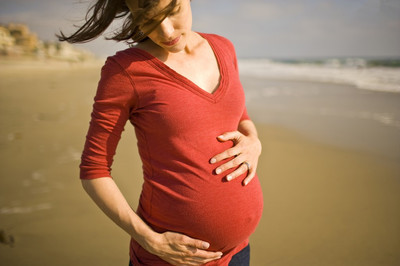和怀孕的女人谈论性
2016 | 和怀孕的女人谈论性往往会招来很多人的皱眉,这个现象的背后其实有着更为深刻的社会原因,那么究竟是什么原因呢?让我们聆听本期TED演讲者Sofia Jawed女士给大家带来的解读。
演讲视频:
精彩演讲片段节选
We're going to share a lot of secrets today, you and I, and in doing so, I hope that we can lift some of the shame many of us feel about sex.
今天你们和我将分享很多秘密。这么做的目的是,我希望可以消除一些我们对性的羞耻感。
How many here have ever been catcalled by a stranger? Lots of women. For me, the time I remember best is when that stranger was a student of mine. He came up to me after class that night and his words confirmed what I already knew:"I am so sorry, professor. If I had known it was you, I would never have said those things."
在座各位,有多少人曾被陌生人吹口哨?很多女士。对我来说,我记得最清楚的是,那个陌生人是我的一个学生。那晚下课后,他来找我,他的话证实了我已知道的:“非常抱歉,教授。如果早知道是您,我怎么也不会说那些话。”
I wasn't a person to him until I was his professor. This concept, called objectification, is the foundation of sexism, and we see it reinforced through every aspect of our lives. We see it in the government that refuses to punish men for raping women. We see it in advertisements. How many of you have seen an advertisement that uses a woman's breast to sell an entirely unrelated product? Or movie after movie after movie that portrays women as only love interests?
对他来说,如果我不是他的教授,他就没把我是一个人。这就是所谓「人格物化」的概念,这是性别歧视的基础。我们在生活的各个层面,看到它不断的被强化,我们可从政府部门拒绝惩罚那些强奸妇女的男人看到。我们在广告里看到。有多少人曾经看过广告中用女性的胸部来推广毫不相干的产品?还有,一部接一部的电影里,女性被刻画成只是爱情目标?
These examples might seem inconsequential and harmless, but they're insidious, slowly building into a culture that refuses to see women as people. We see this in the school that sends home a 10-year-old girl because her clothes were a distraction to boys trying to learn, or the government that refuses to punish men for raping women over and over, or the woman who is killed because she asked a man to stop grinding on her on the dance floor.
这些例子看似无关紧要,无伤大雅,但实际上他们的杀伤力很大,慢慢渗入成一种无视女性为人的文化。我们看见学校把10 岁的女学生打发回家,因为她的衣着让男生分心,不能专心读书,还有那些政府拒绝惩罚强奸女性的男人,一次又一次。还有女性被杀就是因为在舞池,她要求某位男人不要毛手毛脚。
Media plays a large role in perpetuating the objectification of women. Let's consider the classic romantic comedy. We're typically introduced to two kinds of women in these movies, two kinds of desirable women, anyway. The first is the sexy bombshell. This is the unbelievably gorgeous woman with the perfect body. Our leading man has no trouble identifying her and even less trouble having sex with her.
对女性的物化,媒体发挥着重要的作用。让我们设想在一个经典浪漫喜剧中,在这些电影里,总有两种女性,两种让人想要追求的女生。第一种是非常性感的女生,非常美丽的女人,完美的身体曲线。我们的男主角能够毫不费力的注意到她,并甚至很轻易就能和她发生关系。
The second is our leading lady, the beautiful but demure woman our leading man falls in love with despite not noticing her at first or not liking her if he did. The first is the slut. She is to be consumed and forgotten. She is much too available. The second is desirable but modest, and therefore worthy of our leading man's future babies.Marriage material. We're actually told that women have two roles, but these two roles have a difficult time existing within the same woman.
第二个是我们的女主角,美丽端庄的女生,最后被男主角爱上,虽然一开始可能并没有注意到她,或是就算注意到她,也没有立刻喜欢她。第一个女生是荡妇,她在被利用后,就被遗忘了,她太随手可得。第二个女生吸引人但是低调,因此值得成为男主角未来子女的母亲,结婚的材料。我们实际上被告知,女性有两个角色,但是这两种角色很难并存于同一个女人。
On the rare occasion that I share with a new acquaintance that I study sex, if they don't end the conversation right then, they're usually pretty intrigued."Oh. Tell me more." So I do.
在罕见的情况下,我会和刚认识的人分享我是做性研究的。如果这时他们不马上中止谈话,他们通常都会很好奇。“哦,说来听听。”于是我就说了。

"I'm really interested in studying the sexual behaviors of pregnant and postpartum couples." At this point I get a different kind of response. "Oh. Huh. Do pregnant people even have sex? Have you thought about studying sexual desire or orgasms?That would be interesting, and sexy."
“我对怀孕中和产后夫妻的性行为的研究,非常感兴趣。”这时我会得到不同的回应。“哦,哼。孕妇可以有性行为吗?你有没有想过研究性欲,或性高潮?那应该会更有意思,并且性感。”
Tell me. What are the first words that come to mind when you picture a pregnant woman? I asked this question in a survey of over 500 adults, and most responded with "belly" or "round" and "cute." This didn't surprise me too much. What else do we label as cute? Babies. Puppies. Kittens. The elderly. Right?
请告诉我,当你们想到孕妇的时候,进入你们脑海的第一个字是什么?这个问题,我在一个调查中访问了超过 500 个成年人,最多的回答是「肚子」或「圆形」,还有 「可爱」。这并没有让我很吃惊。还有什么我们通常用可爱来形容? 婴儿、小狗、小猫。还有年长者。是吗?
When we label an adult as cute, though, we take away a lot of their intelligence, their complexity. We reduce them to childlike qualities. I also asked heterosexual men to imagine a woman that they're partnered with is pregnant, and then asked women to imagine that they are pregnant, and then tell me the first words that come to mind when they imagine having sex. Most of the responses were negative. "Gross." "Awkward.""Not sexy." "Odd." "Uncomfortable." "How?"
当我们把成年人用可爱来形容时,我们剥夺了他们的智慧,以及他们复杂性。我们把他们降到了小孩子的水准。我也访问过异性恋的男生,让他们假想他们的另一半正在怀孕,然后问女生假想自己怀孕,然后告诉我当他们想象在做性行为时,首先想到的第一个字词。大多数的反应都是负面的。” 恶心、尴尬、不性感、奇怪、不舒服、怎么做?
"Not worth the trouble." "Not worth the risk."
“这么麻烦不值得。”“不值得冒险。”
That last one really stuck with me. We might think that because we divorce pregnant women and moms from sexuality, we are removing the constraints of sexual objectification. They experience less sexism. Right? Not exactly. What happens instead is a different kind of objectification. In my efforts to explain this to others, one conversation led to the Venus of Willendorf, a Paleolithic figurine scholars assumed was a goddess of love and beauty, hence the name Venus.
最后的一个词让我想了很久。我们可能认为因为我们把孕妇、母亲和性分开,我们就去除了性物化的约束。她们经历一些性别歧视。是吗?并不尽然。其实结果是另外一种形式的物化,在我努力向别人解释这个的时候,其中的一次谈话就转到维伦多尔夫的维纳斯,这个旧石器时代的小雕像,学者们认为是爱和美丽的女神。因此命名她为维纳斯。
This theory was later revised, though, when scholars noted the sculptor's obvious focus on the figurine's reproductive features: large breasts, considered ideal for nursing; a round, possibly pregnant belly; the remnants of red dye, alluding to menstruation or birth. They also assumed that she was meant to be held or placed lying down because her tiny feet don't allow her to be freestanding. She also had no face.
这个理论之后又被更正过,当学者们注意到雕刻家的重心明显的放在雕像的生殖特征上:丰满的胸部被认为是理想的哺育工具,丰满,可能已怀孕的腹部;红赭染料的残留,暗示月经或生育。学者们也假设她是应该被抬着,或是平放着的,因为她的小脚是不允许她能站着的。她也没有脸。
For this reason, it was assumed that she was a representation of fertility and not a portrait of a person. She was an object. In the history of her interpretation, she went from object of ideal beauty and love to object of reproduction.
因为如此,她被认为是繁衍的象征。并不是一个人的塑像。她是一个物品。贯穿在对她的解读的历史里,她从一个理想的美和爱的对象,变成繁衍的物品。
I think this transition speaks more about the scholars who have interpreted her purpose than the actual purpose of the figurine herself. When a woman becomes pregnant, she leaves the realm of men's sexual desire and slides into her reproductive and child-rearing role. In doing so, she also becomes the property of the community, considered very important but only because she's pregnant. Right? I've taken to calling this the Willendorf effect, and once again we see it reinforced in many aspects of her life.
我认为这种转变,与其说是雕像的实际目的,不如说是,它告诉了我们那些研究她的学者的想法。当一个女人怀孕了,她不再是男性性需求的对象,随后进入了生育和养育孩子的角色。这样之后,她又成为了社区的共同财产。被认为非常重要,但只是因为她怀孕的缘故。是不是? 我把这个称为「维伦多夫效应」。再一次我们看见它在女性生活的许多方面被强化。


